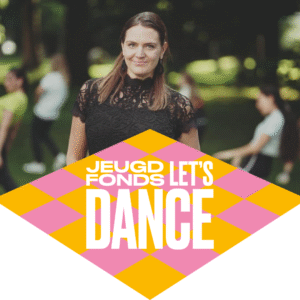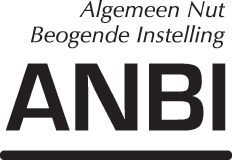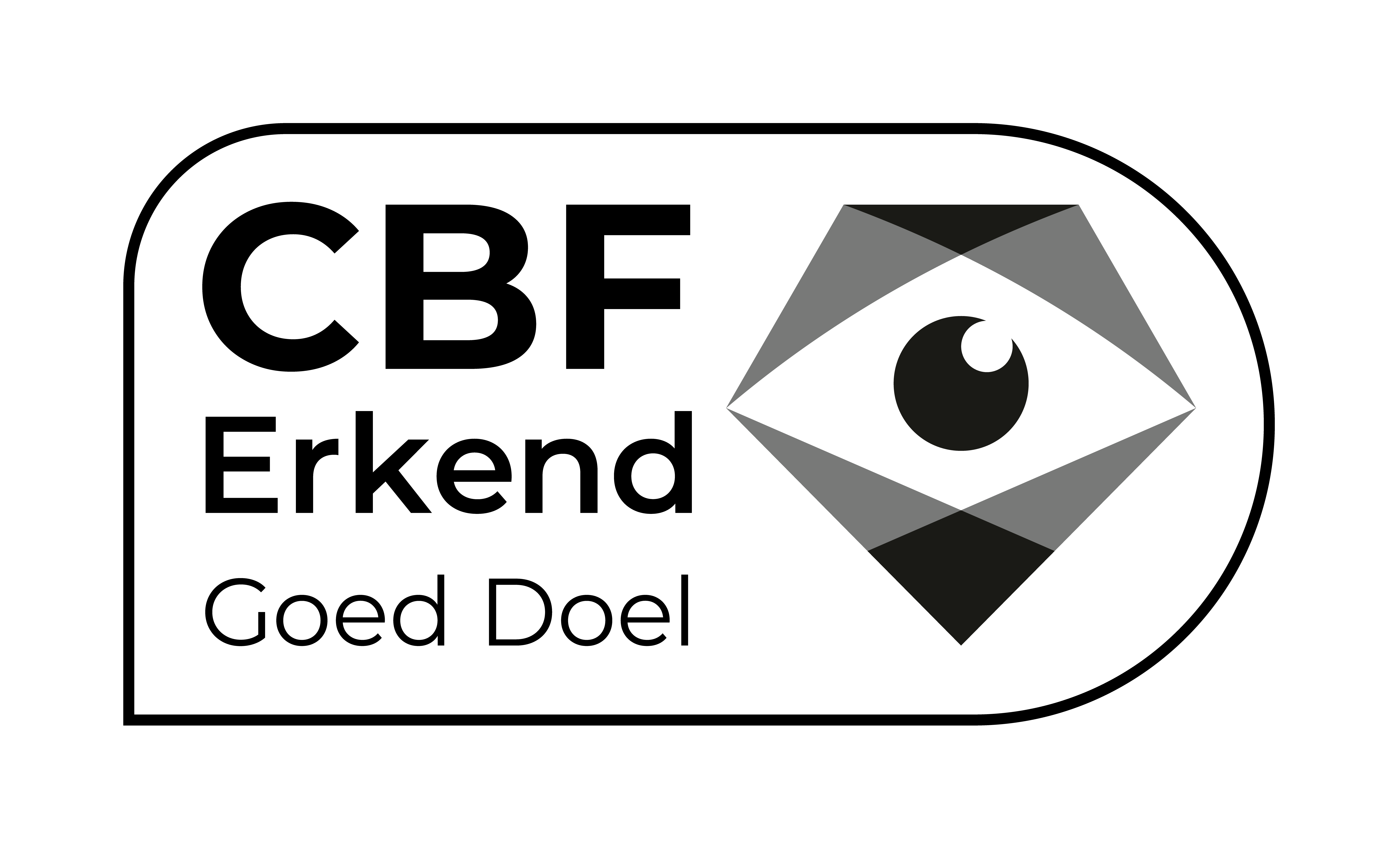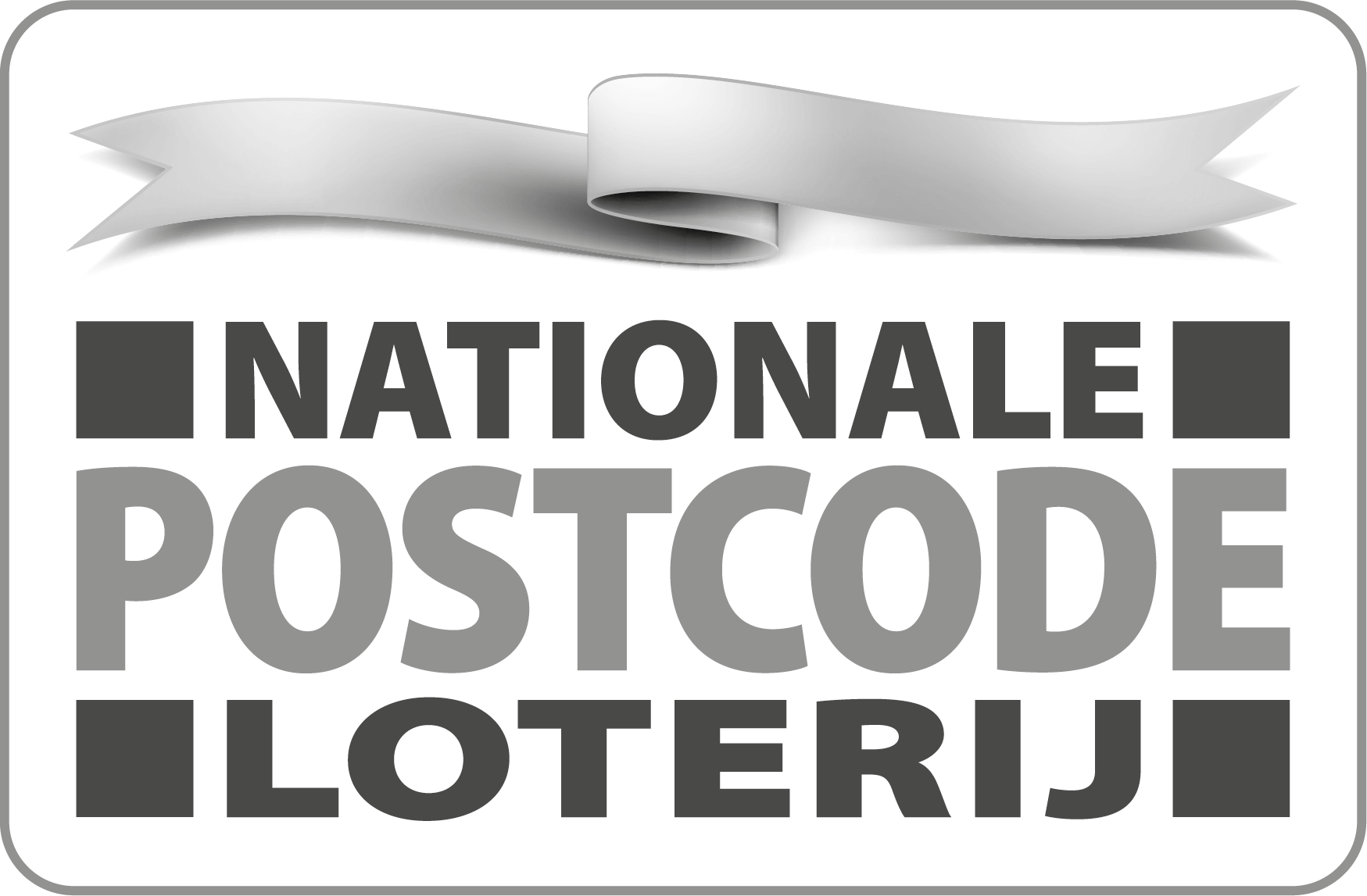News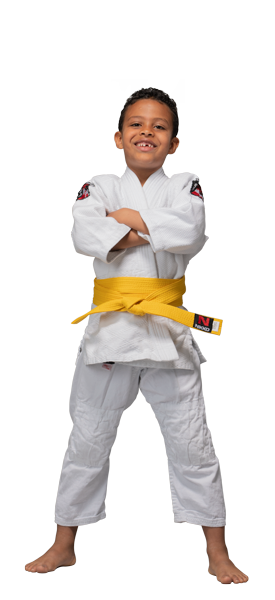
Petra Pluimers is the creator of dance squares called Urban Dance Grounds. She is also the coordinator of Youth Fund Let's Dance: free dance lessons at these dance squares. "It's a success: the girls are very enthusiastic and keep coming back. That shows there's a demand for it."
Urban Dance Grounds
How do you use innovation to get girls moving more? It was a great challenge for Petra's graduation project. It led to 24 Urban Dance Grounds spread across the Netherlands. These public dance spaces are equipped with a smart speaker that lets you dance to your favorite music. Petra: "You place your phone on the pole, spin a wheel for 30 seconds, and then you have four minutes of music. Just enough for one song. There's no noise pollution for the neighborhood, because after three meters, you can no longer hear it."
A great opportunity to get girls outside and moving.
The dance squares are located in neighborhoods, close to children and young people. The Youth Fund wants to get girls dancing and moving close to home, and make it easier for them to go to a local dance school. The project is designed to achieve this. Youth Fund Let's Dance set up. From May to July, dance teachers from local dance schools gave free dance lessons at five Urban Dance Grounds in the Netherlands for six weeks. Petra: "Boys play soccer and basketball. You see girls exercising less outdoors, especially from secondary school age onwards. The dance lessons at Urban Dance Grounds are a great opportunity to get them outdoors and moving more and to participate in cultural activities.”
The girls were very enthusiastic and kept coming back.
Petra is "very pleased" with the project. "The dance schools were happy to participate; it was a great opportunity for them to increase their visibility in the neighborhood." She was also pleased with the turnout: "We had a lot of participants, especially girls. Despite the bad weather, they were very enthusiastic and kept coming back. That shows there's a need for it."
Read more about the conversations with the girls >
'Parents have seen that there is also something for their daughters to do on the streets'
Youth Fund Let's Dance It's also a long-term success, says Petra. "The free dance lessons gave the girls more to do outdoors, and it makes it easier to join a local dance school. I hear from several people that these dance lessons have convinced both girls and their parents to join a dance school. Moreover, their parents have now seen that there's something for their daughters to do on the streets. That can make it easier for girls to get out and about."
Most people want to participate again next time.
Petra spoke to several girls about the project during the lessons in Kanaleneiland, Utrecht. The dance lessons were clearly a hit; most of the girls said they would participate again next time. All the girls indicate that they have little time, especially because of school obligations.
I'm very busy and don't have much time. I'm still studying a lot for my eighth-grade exam. And I want to maintain my current Cito level. I have to study. Every now and then, I also have to visit my grandmother.
The girls also say they appreciate having already met the teacher during the dance classes at the Jeugdfonds Let's Dance. This makes it easier for them to go to the dance school. One of the girls says:I'm really glad I've already met the dance teacher; she's really nice. Now I'm less nervous about going to the dance school.
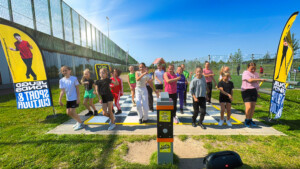
Girls can participate again in 2025, this time in no fewer than 10 neighborhoods.
>> Read more about it here Youth Fund Let's Dance
Aas a child was dancing already her passion and exhaust valve, says Daisy PetersShe is dance teacher and owner of PM-Dance in Utrecht, and gave dance lessons at the Youth Fund Let's Dance. Daisy wishes everyone hand pleasure of dancing. She makes an effort that's why every day to make as many children as possible dance: 'I see them beaming and shining.'
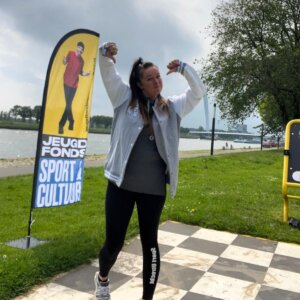
At PM-Dance there are aAll children and young people are welcome. "We encounter everything here”, says Daisy: “KChildren who have it easy and comfortable, children who have it tough, children with a backpack. We put them all together.. And what is so beautiful: they help each other."
For some, dancing is a sport, for others it is an outlet
Daisy notices that dancing means a lot to children. “Every child is happy; everyone wants to belong somewhere. For some, dancing is a sport, for others, it's an outlet. You see them grow. They learn the dances better and better and are becoming more of a team. I see them beaming and glowing. And they absolutely love being on stage with the Christmas and summer show.”
Dancing is very popular with girls
Daisy collaborated with the Youth Fund Let's Dance in the Kanaleneiland neighborhood of Utrecht. The Youth Fund aims to encourage children, especially girls, to dance in the squares. Daisy: "Boys are always welcome, but girls are less active than boys, especially from secondary school onward. Dancing is very popular with girls."
Youth Fund Let's Dance made girls very happy
The Let's Dance Youth Fund is a wonderful and successful project, says Daisy. “The girls who came to dance were thrilled. It rained heavily on the first day, but they didn't mind. They came back, and some of them are eager to continue. There are just no dance classes in Kanaleneiland. We're now looking into how we can organize them. I always hope to see some special people come along; someone who, due to circumstances, can't play sports and can now do so. I'm already happy with one special event, but the Let's Dance Youth Fund has generated many more.”
All parents and children in the picture
Besides running a dance school, Daisy is also a neighborhood sports coach for Sport Utrecht in the Overvecht neighborhood. She visits many schools for this purpose. She finds out which children are and aren't active, and which sport they'd like to try. This way, she connects with all the children and their parents. If cost is an issue, Daisy refers parents to the Youth Fund and helps them apply for tuition. "Because of this, some girls have been able to dance with us for a long time. We also have children who I'd lost because their parents could no longer afford it."
>> Read more about the Youth Fund Let's Dance
"Dancing is good for your development," says Milou Drent-Middendorp. She's a dance instructor at the Groningen dance school Dance Division Dijkmansport and taught dance classes at the Let's Dance Youth Fund. Milou is thrilled that dancing is so popular. "Kids imitate TikTok videos and think, 'I can do this, I want to take dance lessons!'"
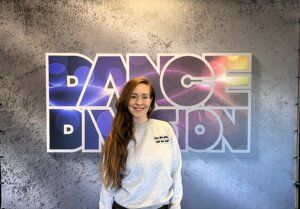
"Dancing makes me really happy," says Milou. "I can express my creativity through it, and it makes me happy." More and more children are discovering this too. Milou: "Dancing is very popular. We're getting more and more students."
Children imitate TikTok videos and think: I can do this!
Most of the students are between 8 and 14 years old, the age when children become addicted to their phones. Milou is definitely not a fan of excessive phone use. But she notices that the videos on social media do encourage children to start dancing. "A lot of children come to dance classes because they see a lot of dance on TikTok and Instagram. They start imitating it, enjoy it, and think: I can do this, I want to take dance classes!" It's great that children whose parents can't afford dance classes can still participate thanks to the Youth Sports & Culture Fund. "There are a few children in every group who can take dance classes because of this."
Dancing is fun, social and sporty
Some children come purely for the dancing. Milou: "They want to continue. I notice there are also children who come more for the social aspect. They don't follow the dance steps as precisely, but that's okay. As long as they enjoy it." Besides fun, dancing offers other benefits, says Milou. "Dancing is social and sporty. It connects you, because you're really engaged with each other in a group. And you're using your body, you're moving. It's good for your development."
Urban Dance Grounds: 'It's great that they're here'
Milou is one of the dance teachers who gave free dance lessons for six weeks in Groningen through the Jeugdfonds Let's Dance. These lessons took place at Urban Dance Grounds: public dance spaces throughout the Netherlands. The goal was to encourage children to start dancing. "It's really cool that there are Urban Dance Grounds. The one in Groningen isn't in our neighborhood, but I'd love to have one here for the dance school. It would be packed, because after dance lessons, the children often continue practicing outside or in the cafeteria, and film their dances."
Let's Dance is a good initiative to get children in the neighborhood to do sports
"It was really fun to participate in Let's Dance," says Milou. "It's a great initiative to get local kids involved in sports. The kids had a blast, they participated well, and the weather was usually nice. I would definitely do it again. Another great result is that several children are eager to come dance with us. Parents who weren't aware of the Youth Fund now know their child can still go to a dance school. Let's Dance has made the decision to go to a dance school easier."
>> Read more about the Youth Fund Let's Dance
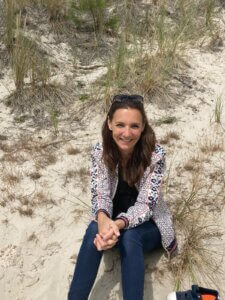
Annekatrien Gielkens
Annekatrien Gielkens has been project leader at the Parkwest dance and theater school since 2021. "We teach dance and theater classes with great enthusiasm to children and young people between the ages of 4 and 18 at three locations: Staatsliedenbuurt, Baarsjes, and Spaarndammerbuurt." She does this with great passion: "You should see the students on the day of a performance. One and all the joy and pride to be on such a big stage!”
Lesson from the children's world
At the end of each season, the students perform a performance they create themselves. Annekatrien explains: “With the teacher, they look for a topic that interests them, and then the preparation begins. Children are given various assignments such as improvisation, role-playing, and exploring and pushing their boundaries. Besides creativity and movement, social cohesion also develops within the various groups,” Annekatrien explains. “The teachers are graduates of the University of the Arts and believe it's important to create an atmosphere in which every child feels comfortable opening up and feels free to share their thoughts and perspectives. On the day of the performance, you see the pride and joy of being able to stand on such a large stage. Performing for their family and friends is an unforgettable experience for a child. Seeing those happy faces is what I do it for; that's where my heart lies.”
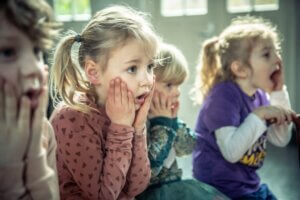
Photo by Marc Roodhart
Contact family
At Parkwest, contact with parents and understanding their home environment are very important. "Experience shows that good contact with families means children stay in our classes longer and we can truly build a bond with them," explains Annekatrien.
Annekatrien is very pleased with the collaboration with the Youth Fund for Sport & Culture: "The Youth Fund ensures that we don't have to turn away any child from taking lessons with us. This aligns perfectly with Parkwest's goals: that every young Amsterdammer should be able to develop their talents and fully participate and contribute to society."
During class, the children escape the daily grind of school and home. They're happy to dance, learn new steps, and engage in theater.
John Gubbels is director of SMK music and dance in Kerkrade. At SMK, they believe that discovering and developing talents through music and dance leads to personal growth and greater harmony within society. This applies to everyone, regardless of age, background, musical taste, skill level, goal, or the size of the scholarship. With the support of the Limburg Youth Fund for Sports and Culture, children can also participate in SMK.
With the "More Harmony in Society" program, SMK connects education and the socio-cultural domain. Together, they aim to remove potential barriers to participating in musical and cultural activities for every child. Structural and sustainable collaboration contributes positively to well-being, participation, and inclusion within the region. This also contributes to preventative youth care.
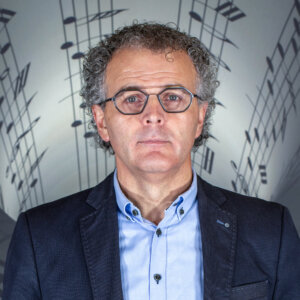
Music and dance at school
Around 300 children have already been able to participate in music and dance lessons at SMK with support from the Limburg Youth Fund for Sports and Culture. In total, SMK now reaches approximately 8,000 children in the municipalities of Landgraaf, Kerkrade, and Brunssum. These children receive music lessons from a specialist teacher in primary school. SMK also offers various after-school projects, such as wind instrument classes, choir classes, DJ bands, pop bands, and more. This allows children to experience making music or singing together in a variety of ways.
Cooperation
John Gubbels explains why it's important for every child to be able to participate: "There are significant concerns about growing poverty in families and the multiplication of problems. For example, one in four children in the four major municipalities of Parkstad grows up in poverty. It's not a given for these children to be involved in music and culture. We hear from parents that they find it very rewarding that their child can experience and participate in these activities at school."
Not all parents allow their children to participate in our (free) after-school program. They worry that their child will become overly motivated to pursue music or dance, and they can't afford it. That's why SMK is pleased with the excellent collaboration with the Youth Fund for Sport & Culture: this way, every child can participate in regular music or dance lessons through an individual contribution—after the introduction at school.
The Urban Dance Studio is an integral part of the Venlo urban scene. Founder Aletta Mkaouar-Smit launched the dance school in 2008. She's been dancing herself since she was young and can't imagine her life without it. She experiences every day how important it is for children to be able to participate. "They become part of something."
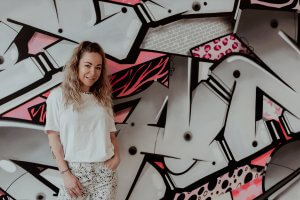
I started with classical ballet, then took modern jazz and street dance classes. After that, I was asked to teach an hour a week at a youth center, and soon I was asked to teach in many more places. I then went to the ALO (Academic Education) to get a good grasp on the teaching side of things. There weren't any urban dance programs at the time, and that's exactly what I really wanted to do. Through various courses and programs at home and abroad, I honed my skills and started the Urban Dance Studio. That was fifteen years ago, but urban dance is still incredibly popular and even growing.
Everyone is equal
In her youth work, Aletta saw how difficult certain situations can be for families. She makes an extra effort to help these families. At the Urban Dance Studio, a group of children takes classes with the support of the Youth Fund. "At least 50 of the 400 children," Aletta explains. "The option to use the Youth Fund is listed on our website and also on the registration form. Our target group is very broad and comes from all walks of life. But those differences disappear the moment they enter the school; then everyone is equal. Once a year, we have a big performance here at the theater, and we make sure that parents who have difficulty affording a ticket can also come and see their child. We invest a lot of time and energy in that."
Social responsibility
Children don't just come for an hour of urban dance; it's much more than that. "We organize events, workshops, and performances, and we collaborate with various organizations in the region. So, the students visit many different places and participate in all sorts of initiatives. They find it becomes increasingly easier to get involved in certain projects. They realize it's not just an hour of dance class and feel like they belong somewhere. The children who dance with us through the Youth Fund are also in special selection classes and participate in national and international competitions; we simply ensure they can participate. I see that as my social responsibility."
More poverty in the middle class
Aletta sees poverty growing, even among the middle class, who have been able to get by comfortably until now. “I see this new group struggling more and more to pay their dues. And when cuts have to be made, parents often first focus on 'extras' like children's clubs. We see that very clearly. Moreover, they're a very difficult group to reach because they have no contact with the agencies that can help. They don't know about the existence of intermediaries who can apply for them with the Youth Fund, and no one else needs to know about them. When I see parents on the brink, it's my job to start a conversation. I see a lot of shame, but the important thing is that the child can keep dancing.”
Contacting the coordinator is a must!
The intermediaries aren't very visible, and that's a stumbling block, Aletta believes. "In neighborhoods and schools where poverty is high, it's very clear who parents should contact. But in neighborhoods and at schools where poverty is uncommon, it's very difficult for parents to ask for help. They don't know the way, and the barrier to entry is high. Schools themselves often don't know if there's an intermediary and who they are. It's something teachers do on the side. If it were a dedicated role, things would run more smoothly. Those intermediaries are also very difficult for me to reach. If I run into a problem, I call our coordinator here in Venlo. She has so much knowledge and is passionate about what she does. If I didn't have her, I'd be left with so many questions. The coordinator's role is so important. Contacting the Youth Fund coordinator in your municipality is a must for every sports or cultural provider!"
"I just wanted to say that I'm so glad you're here. It's wonderful to be able to offer something to families who otherwise wouldn't be able to afford it. Thanks to you, children can participate again!"
Club of the Year, winner of the Grote Appeltje van Oranje award, Coach of the Year. Haarlem-based club Triple ThreaT has received widespread recognition in recent years. Twin brothers Philip and Dominique Schemmekes are incredibly proud. "This feels like recognition for everyone who has poured their heart and soul into this club for years.". It is also much more than an association. It is a positive lifestyle community, for and by young people. Sports and all sorts of other initiatives are used here to help them develop. Nearly 700 young people from the disadvantaged neighborhood discover their passion and strength here. And all this in a warm, positive environment. Guess what? It works!
 The brothers grew up in the Schalkwijk neighborhood of Haarlem. Philip Schemmekes: “My mother was Ghanaian, my father was Dutch, and I had a younger sister. My parents were divorced, and we didn't have much money at home. We weren't well off and spent a lot of time outdoors.” Dominique adds: “We became independent early on. We did our own thing to put less pressure on the home front. The street was our playground, and we drew inspiration from other, older guys. To be honest, they weren't the best role models. I made bad choices, got a name, and started acting accordingly. Success comes from things other than what I was doing at the time.” Philip also looks back on that period with mixed feelings. “Choosing the easiest path isn't always the smartest, I know now. But you're stuck in a cycle, and it's not easy to break out of it. We had some bad friends, social services were involved, the police… Luckily, we came into contact with sports then, in our case basketball, and that changed our lives.” Dominique says it very emphatically: “Basketball was my savior!”
The brothers grew up in the Schalkwijk neighborhood of Haarlem. Philip Schemmekes: “My mother was Ghanaian, my father was Dutch, and I had a younger sister. My parents were divorced, and we didn't have much money at home. We weren't well off and spent a lot of time outdoors.” Dominique adds: “We became independent early on. We did our own thing to put less pressure on the home front. The street was our playground, and we drew inspiration from other, older guys. To be honest, they weren't the best role models. I made bad choices, got a name, and started acting accordingly. Success comes from things other than what I was doing at the time.” Philip also looks back on that period with mixed feelings. “Choosing the easiest path isn't always the smartest, I know now. But you're stuck in a cycle, and it's not easy to break out of it. We had some bad friends, social services were involved, the police… Luckily, we came into contact with sports then, in our case basketball, and that changed our lives.” Dominique says it very emphatically: “Basketball was my savior!”
Success doesn't come easy
Role models are essential. Just like people who believe in you and give you confidence. Others who show you that you have a choice. That you can also take a different path. Philip is convinced that a good example can inspire others. “For example, I benefited immensely from a coach who taught me that if you want to achieve something, you have to work for it. Success doesn't just happen. For example, I really wanted to become a professional basketball player in the NBA, in America. That was my dream. But that requires three things: having your school in order, otherwise you won't be accepted into a college. You have to be good because you need references. So that required a change in behavior. I had to become a good person. And finally, I had to work harder than the rest because why else would American clubs hire me from the Netherlands? That dream was a great motivation to turn my life around.”
I got perspective
Dominique also took up basketball and proved to be equally talented. "That sport has been so good for me. I was so engrossed in it that I no longer had time to get into trouble. Being on the court, training, playing, and learning gave me a different perspective on life. I gained perspective. Sports offer structure. It was good to function in a team, to be given and take responsibility, to work together. But it was also good for me to live a disciplined life. Basketball is very urbanA sport of the city. Music, rap, hip-hop—it's all part of it. At the same time, the discipline is intense and it's physically and mentally demanding. Your entire body is used, and you can't perform without being fit and healthy. And, very importantly, you can't do it alone. You need each other to achieve something as a team. You have to move almost as one body.
Tapping into passion
"Basketball was also a defining moment for me," says Philip. "Precisely because we know how easily you can drift in a different direction, we started Triple ThreaT in 2009 with childhood friend Okrah Donkor. On a Sunday afternoon, we'd play basketball and listen to music on a court with local kids. We weren't even 20 yet, but we'd already experienced how role models can inspire. Now we wanted to show younger kids a different path. Tap into their passion, and to do that, we needed to create more connections." From occasional afternoons, it became increasingly serious. The Triple ThreaT association now consists of three pillars: the Foundation, which reaches almost 700 young people from the neighborhood every week; the Basketball Association with 25 teams, several of which play at the highest level; and Indoor Soccer. An Academy has also been established within the Basketball Association. Dominique: "We want to help young people excel both athletically and socially. We use elite sports as a means to empower participants in the broadest sense of the word. You should also see it as an extension of the classroom. We support student-athletes by fostering an elite sports mentality, with a strong focus on personal development."
One big building
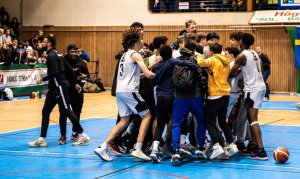 The association now has a Lifestyle Centre. Philip: "We dance here, cook, cut hair, play sports, and make music—basically anything the space allows and the young people themselves come up with. Internships and homework support are also part of the program." United by dreams "That's our slogan, and that's how we truly see it. Dream! Do it together. Think about what you want to discover, try out, and we'll see what's possible. We're currently running out of space, and many activities are spread across the city. My own dream is to have one large building where we can connect and bring all the activities together. We've really outgrown our current space."
The association now has a Lifestyle Centre. Philip: "We dance here, cook, cut hair, play sports, and make music—basically anything the space allows and the young people themselves come up with. Internships and homework support are also part of the program." United by dreams "That's our slogan, and that's how we truly see it. Dream! Do it together. Think about what you want to discover, try out, and we'll see what's possible. We're currently running out of space, and many activities are spread across the city. My own dream is to have one large building where we can connect and bring all the activities together. We've really outgrown our current space."
Warm social safety net
Self-reliance is central to Triple ThreaT's mission. Dominique: "We use sports, culture, and lifestyle as a means to help young people on their path to adulthood. We want to create a positive environment where they have the opportunity to reach their full potential. A place with a warm social support network, opportunities, and role models, and where the sense of family is highly valued." Philip: "You could call us a positive lifestyle community can call it. Young people are given trust, recognition, and responsibility. Because everyone has potential and talent. Some just need a little push. And that's where we come in. But, it must be said, we can't reach everyone. Sometimes young people drop out. That's still painful, but the door is always open. The warm welcome is there. We'll always be there for them. Behavioral change requires three things: the need, the necessity of the change, the desire, and the ability. If one of these three is missing, it won't work. And we deal with young people who have a lot to overcome. They often experience setbacks. They haven't always had the opportunities or the role models. They haven't been given confidence. We've experienced that ourselves. So we know what it's like in the neighborhood."
We understand each other
Dominique adds: “I think that's why we're so successful. We speak the language of the street. We were once the same ourselves. The young people can identify with us. We understand them, and they understand us. And we believe in them. We see them and, above all, see the possibilities and opportunities. The talent and the passion. Young people from the neighborhood are involved in the organization and trained as role models. They become pillars of support, and that's how they can make a difference in their own communities. This gives these young people perspective and opportunities again. It's truly wonderful to see.” Philip: “I'm proud of everything we achieve together. When you see young people grow and make different choices… That's what you do it for. That's when everything comes together, and magical things happen.”
"Of course, performance is important, but we find the social feeling and the camaraderie much more important. Everyone can come play football. Whether you're 3 or 80. And whether you're a good player or have never played before, you're equally welcome and important here." The board members of the Purmerend football club de Wherevogels take a different approach than many other clubs. Peter and Paulien believe in inclusion. "We don't want to exclude anyone."
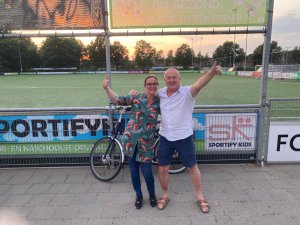 A football club in Purmerend, North Holland. Over 600 members and almost 200 active volunteers. So far, nothing new. But the Wherevogels approach the game a bit differently than many other clubs. Peter: "We have two main pillars that underpin the club. Fun and respect are the starting point, and inclusivity is the second aspect. Everyone should be able to play football. And we mean that literally." Paulien adds: "We consciously don't want to exclude anyone from the club. We welcome everyone and treat everyone with the attention they deserve. That goes far. For example, all teams have the same facilities and opportunities. All unpaid, motivated coaches, and youth players up to 19 all wear the same uniforms and club gear. We rent club clothing to all youth members. Everyone receives the same support. This also means our first teams don't get preferential treatment. No specific sponsors or perks. Truly, everyone is important here."
A football club in Purmerend, North Holland. Over 600 members and almost 200 active volunteers. So far, nothing new. But the Wherevogels approach the game a bit differently than many other clubs. Peter: "We have two main pillars that underpin the club. Fun and respect are the starting point, and inclusivity is the second aspect. Everyone should be able to play football. And we mean that literally." Paulien adds: "We consciously don't want to exclude anyone from the club. We welcome everyone and treat everyone with the attention they deserve. That goes far. For example, all teams have the same facilities and opportunities. All unpaid, motivated coaches, and youth players up to 19 all wear the same uniforms and club gear. We rent club clothing to all youth members. Everyone receives the same support. This also means our first teams don't get preferential treatment. No specific sponsors or perks. Truly, everyone is important here."
Talent and fun
"That's sometimes a difficult message to communicate," says Paulien. "Children are used to something different at other clubs. There, a lot of attention is often paid to talented children and their performance. Of course, we also want our teams to win and perform well, but not at the expense of the joy of playing football. Going onto the pitch with that fun and relaxation in mind; that's what we believe is important. Especially in our performance-driven society. This strategy and choice sometimes requires some explanation for new youth members and their parents. There's performance football and recreational football. Some people think we don't care about talent or winning, but that's not true. We also value other things, namely fun and respect for everyone. Some children are afraid they won't be able to play at a high level at our club, but fortunately, in practice, it turns out otherwise."
People with disabilities are also welcome at the Wherevogels. Peter: "Of course! They'll be part of a program and team we call Special Forces. And it all ties in seamlessly. Of course, that requires some effort from the organization, but because we all embrace the idea of inclusivity, we make an extra effort."
A big social heart
Peter has been involved with the club for twenty years. "And he still enjoys it immensely! It's a fantastic club with a strong social heart. Where people look out for each other and feel connected to each other. Where children grow up together and thus have a safety net. But that doesn't happen automatically. As a board, we sometimes have to work hard on that, together with all the active volunteers. One challenge we face, for example, is that it's sometimes difficult to involve parents in their child's football. That doesn't happen automatically.
We invite them personally, provide information about club life, and engage them, but even then, it's sometimes difficult. The realization that they have to referee, coach, wash, or drive to away games doesn't sink in for all parents. Not everyone grew up with a club and knows that experience from home. The idea that it also comes with obligations is sometimes new. Sharing this message takes a lot of time and energy. But it's an important one. Precisely because we want to be open to everyone."
Contact and relaxation
Paulien: "The club also gained many new members through the municipality, social services, and the Dutch Refugee Council. We have a significant number of non-Dutch-speaking people and people who fled war to the Netherlands who play football with us. That presents challenges, but it's also wonderful to see what football can bring: contact, relaxation, and conviviality. It's a social experience that's essential, especially for this group. We brought in an interpreter and put a lot of effort into communication. That's how we try to create a place for everyone."
Peter explains that there's also a group of children who are members and can play sports through the Youth Fund. "That's a given for us. Everyone is welcome. For example, we've kept the prices in the canteen modestly low so everyone can buy a bag of candy or a drink on the weekends. We don't want anyone to feel left out or unable to participate. Parents who aren't members themselves can also come and play a game with us on Saturdays. Vets Just For Fun is the hour everyone can come and play. No strings attached. Many people appreciate that. And that's where new connections and friendships are made."
For Paulien, sports are much more than just exercise. "It's also fun; a social experience. You make friends, you learn to win and lose, you learn what it means to be part of a team. That comes with responsibility; you have to keep your promises, help each other, and trust each other. Becoming stronger, both physically and mentally, is also an aspect. Children gain more self-confidence and grow as people. So, in my opinion, it's incredibly important that you experience and learn this as a child, in a relaxed and fun way."
Stand next to it
The club also clearly has a community function. People feel at home here and regularly drop by. Even if they don't actively play football themselves, they feel welcome. Peter explains: "We start with toddler football. These are two-year-olds with a ball. Fantastic. And we finish with Walking Football. These are the older ones for whom running no longer comes naturally. And everything in between. There really is a place for everyone here. Approaching and treating each other with respect and openness is something we consider normal here. Coaches are also taught: don't stand above them, but alongside them. On the field, we are all equal." Paulien: "The youngest youth teams present a player with the Player of the Week trophy every week. That way, everyone gets a chance to shine. The trophy goes to school and is shown to grandma and grandpa. It's small things, but it makes everyone feel valued."
The website also includes a clear link to the Youth Sports & Culture Fund. Peter: “We want parents to know that this option is available. That support and assistance are available. We're always thinking along with them about solutions. For example, we collect the membership fees ourselves; we don't have it handled by an external company, which we find too incompetent. This way, we stay in touch with our members. Communication is short, making it easier to make arrangements. So everyone, truly everyone who shares our values and principles, is welcome here. And so you can just enjoy playing football. Because that's the best thing there is!”
More about football through the Youth Fund
As a happy girl, she used to be on the gymnastics mat herself. Now, together with a partner, she owns a gymnastics school in Amsterdam. Sophie Steevensz: "The sport continues to fascinate me. I want to share my enthusiasm and passion for gymnastics with children in a relaxed and playful way. The sport has given me so much; I want every child to experience that."
 "The highlight of the week." Sophie Steevensz looks back on her gymnastics class as a seven-year-old. "I looked forward to the class all week. It started off really casually. An hour on Wednesday afternoon. It wasn't much more, but it was so much fun! I had a great coach; we really bonded, and I trusted her. I felt at home at that club and with her. That's an important aspect of gymnastics: the bond with the coach."
"The highlight of the week." Sophie Steevensz looks back on her gymnastics class as a seven-year-old. "I looked forward to the class all week. It started off really casually. An hour on Wednesday afternoon. It wasn't much more, but it was so much fun! I had a great coach; we really bonded, and I trusted her. I felt at home at that club and with her. That's an important aspect of gymnastics: the bond with the coach."
From that one hour, I climbed to a competitive level and later became a coach myself. It's a challenging, performance-oriented sport. It requires commitment if you truly want to perform at a high level. Training hours can reach 13-15 hours a week. You also need perseverance, the ability to take a beating, and learning to use your body optimally. The stress profile in gymnastics is lower than in many other sports. With gymnastics, you don't train a specific muscle group. You also practice balance and coordination, and train four disciplines. These all involve different muscle demands, so they're demanding, but different every time. At a competitive level, gymnastics isn't just a side activity. It demands a lot from the children, but also from the parents. It's an intense sport. But you get a lot in return.
Learning and growing
Looking back, Sophie sees how gymnastics shaped her. “I’ve truly gained more self-confidence. I’ve learned that you improve with practice. That perseverance pays off and that taking on challenges can bring you something. But I’ve also learned to relax, because it’s all about the balance between exertion and relaxation. And especially the fun of training with others and going to competitions. You’re part of the group. I think that’s important for every child. Belonging and realizing that you’re learning and growing. A club is so different from school or home. It’s an addition that’s important for every child. Sport is healthy, of course, and children become physically stronger. But it’s so much more. Mentally, things also change. I now see children at the club truly growing in all areas and gaining more courage and confidence. That’s wonderful to see.”
A party every week
Six years ago, Sophie and fellow coach Claire Griffiths founded City Gymnastics in Amsterdam. “Our mission is to share our love for gymnastics. In a fun, natural, and relaxed way. Especially now that gymnastics has been receiving so much negative press lately, we want to show that things can be done differently. We teach children in a personal, fun, engaging way, with a close-knit team. Just show up in leggings and a T-shirt if the child feels comfortable with that. No strict, overt gymnastics culture. But above all, fun and relaxed. We want to make it a party every week, both for the children who come for an hour and for the competitive gymnasts. When I was young, I loved the sport, but the drive to perform was difficult. The competitions were often scary and exciting for me. The pressure was on, the bar was set high. And yet, I wanted to do gymnastics every day. That wasn't right, it wasn't right. That's why we want to take a different approach at our gymnastics club.”
Everyone is welcome
What started years ago as a small club has now grown into an association with 450 gymnasts. It's really taken off! We offer mini-gym classes to little ones from the age of 2, to puberty-aged children, and everyone in between. From pure recreational to competitive sports. We have a close-knit team of trainers who coach the children with joy and professionalism. It's not just about performance; we want to achieve more. Let the students have fun, have fun. They also work together as a group, encourage and help each other. That makes you stronger. We also have children who participate in gymnastics with us through the Youth Sports & Culture Fund. It's so wonderful that this is possible. Everyone is welcome. In both recreational and competitive classes, there are children who are struggling financially at home. For them, sports are an outlet. A time during the week when they're not confronted with the worries of home. When they're simply part of the group. Just relax. Have a safe, familiar place. That's incredibly valuable. It can lead to new friendships or a different mindset. It can provide relaxation and boost self-confidence. That's why I hope parents don't hesitate to ask for help. So that every child can participate and become a member. A club. Because no one wants to be left behind. And if it were up to us: come and enjoy gymnastics!
More about gymnastics through the Youth Fund
He's a professional dancer, dance teacher, and owner of a dance school. Anthony Pinas lives and breathes dance. "If I don't move, if I don't dance, I become sluggish, have no energy, and my brain only works at half capacity. That's how I see it's good for me. Exercise is especially important for children. Not only physically, but also socially and mentally, it's essential. That's why every child should have access to sports, regardless of their financial situation at home."
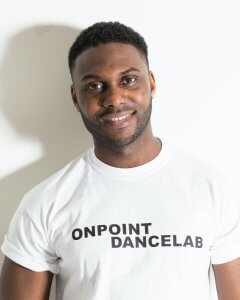 Anthony Pinas has been dancing since he was twenty and still regrets not starting sooner. “It’s so wonderful! I’m a professional dancer. I’ve performed extensively both at home and abroad. But I’ve also always taught and have had my own dance school for years, OnPoint Dancelab in Amsterdam and Diemen. Teaching is what gives me so much satisfaction. Not every dancer is a teacher, but I really enjoy inspiring others. Helping them overcome the barrier and improve. It’s all about growth for me. Seeing someone come in and improve, and open up more and more.”
Anthony Pinas has been dancing since he was twenty and still regrets not starting sooner. “It’s so wonderful! I’m a professional dancer. I’ve performed extensively both at home and abroad. But I’ve also always taught and have had my own dance school for years, OnPoint Dancelab in Amsterdam and Diemen. Teaching is what gives me so much satisfaction. Not every dancer is a teacher, but I really enjoy inspiring others. Helping them overcome the barrier and improve. It’s all about growth for me. Seeing someone come in and improve, and open up more and more.”
Being vulnerable
When Anthony talks about the effects of dancing, he lights up. “Besides physical growth like building fitness, strengthening muscles, and improving body control, dancing also promotes growth in other areas. The more you practice, the better you get. So that builds self-confidence. Dancing doesn't come naturally to everyone. Some find it very intimidating and daunting. It requires the courage to be vulnerable, to show yourself. It's a form of self-expression, it's emotion. People open up when they dance. That's beautiful to see. I've experienced that this also carries over beyond the dance floor. People can connect better with others, are more open, and feel more comfortable in their own skin. I hear from parents that their children are doing better at home. That they're more relaxed and also perform better at school. Children become fitter, but also more sociable, more active, and their brains are put to work. These are all effects of dancing.”
I am also raising children
What I also love to see is the group process. You dance with your own body, but not alone. You build something together, you create something together. You help each other, and you really have to do it together. You learn from each other and teach each other things. So that's a process for many children too. I sometimes say that as a dance teacher, I'm also educating. It's about teaching basic skills like self-confidence, responsible behavior, discipline, and concentration. Skills that are useful everywhere. We also tap into creativity, social skills, and learning to work together. But most importantly: it's just a lot of fun. It's great to dance together!
Ego aside
Children aged four and up are welcome. They move playfully to music. It's wonderful to watch. From age seven, they move on to hip-hop, street dance, or Afro classes. And so you can keep dancing until you're eighty. I want everyone to experience that. That's why I hope parents don't hesitate to contact the Youth Sports & Culture Fund. Put your ego aside. Call, email, and sign up if your child wants to dance and you can't afford it. It can be so rewarding. Give your child that experience. Because every day I see the benefits of movement and dancing. And money shouldn't be an obstacle.
Photo: Karen Steenwinkel.
Facts & numbers
children and young people became members of a club through us in 2024.
in 2024, children and young people became members of a sports club through us.
in 2024, children and young people became members of a cultural club through us.
issued sports and cultural equipment in 2024.
